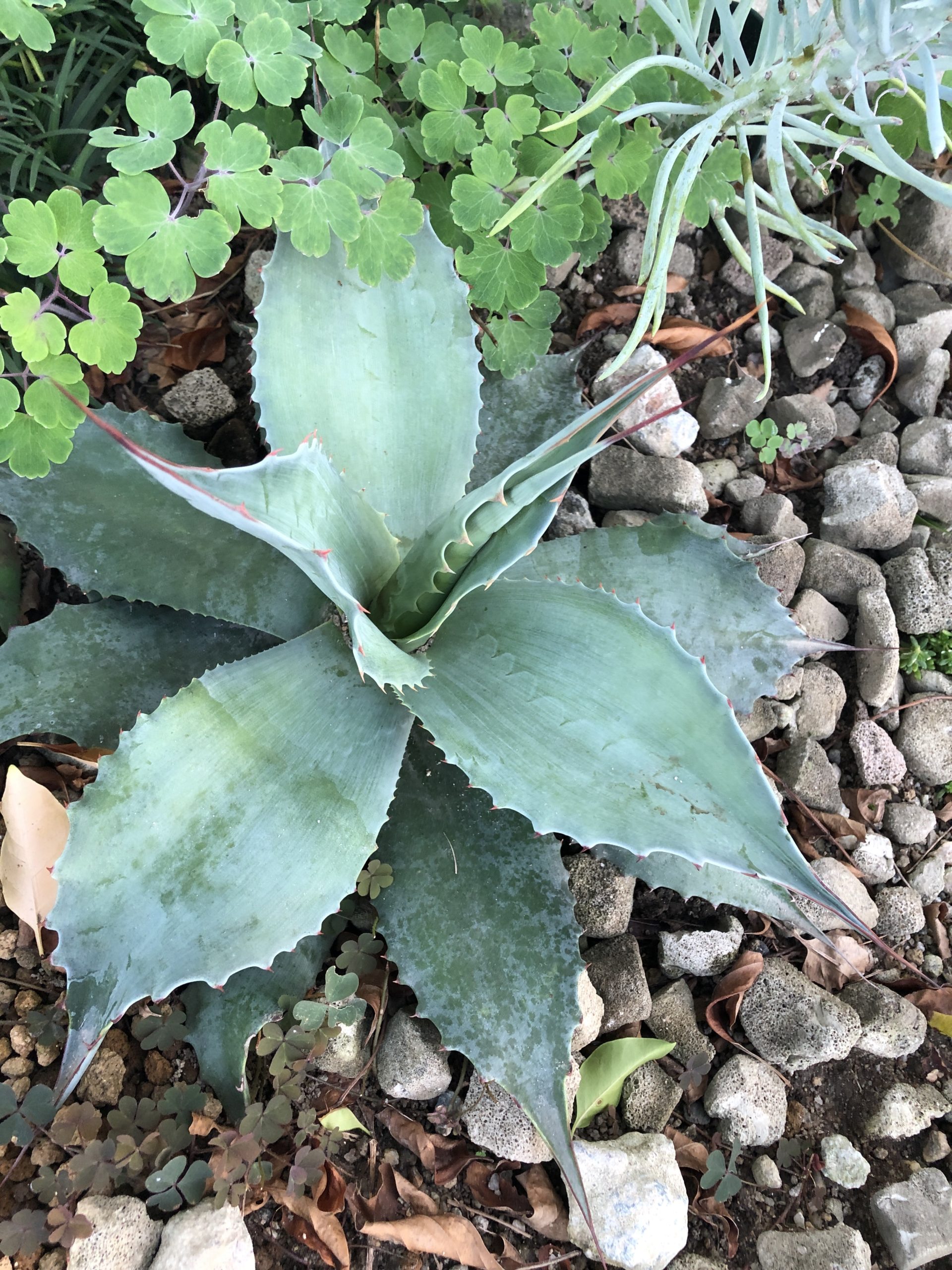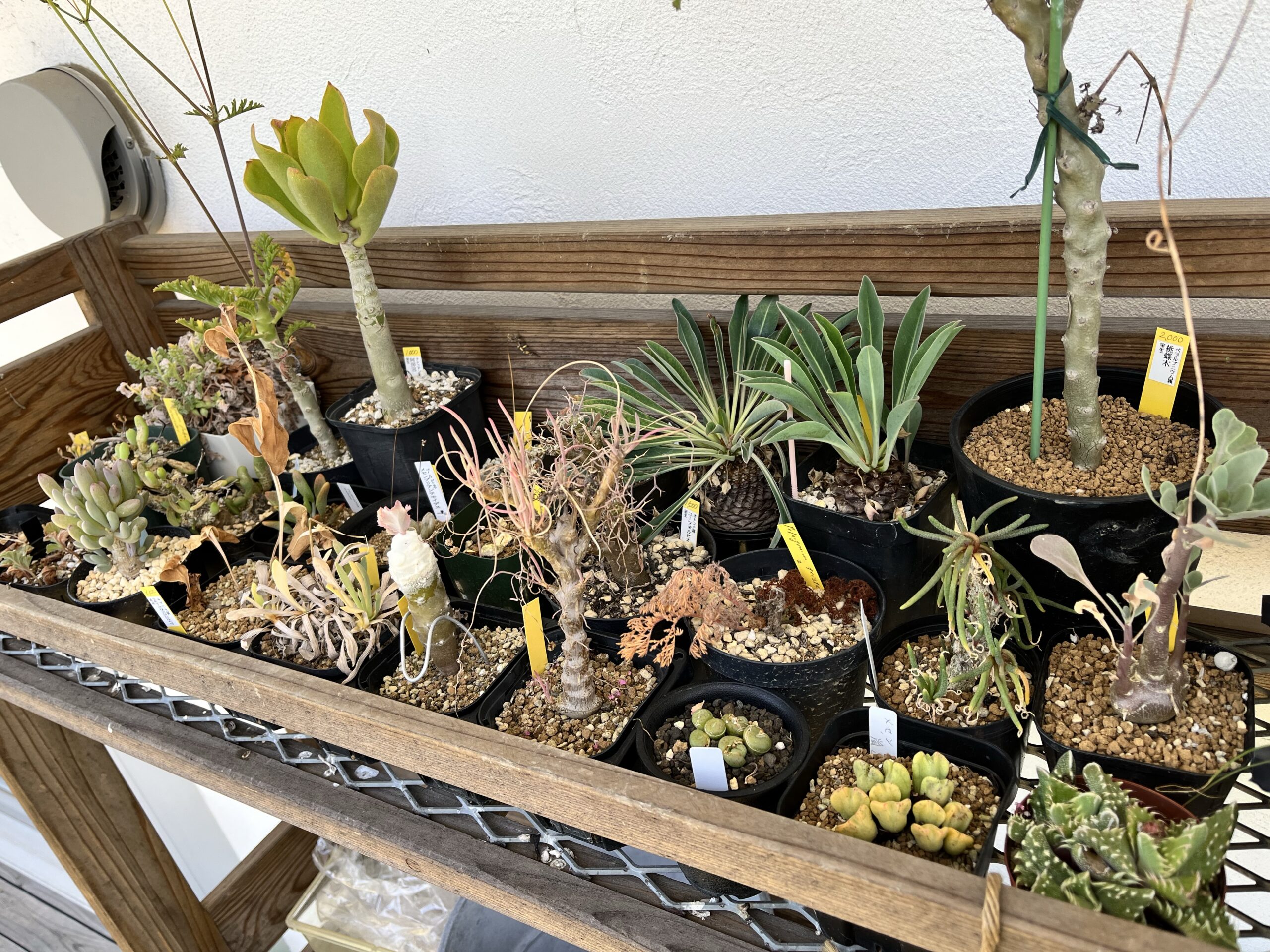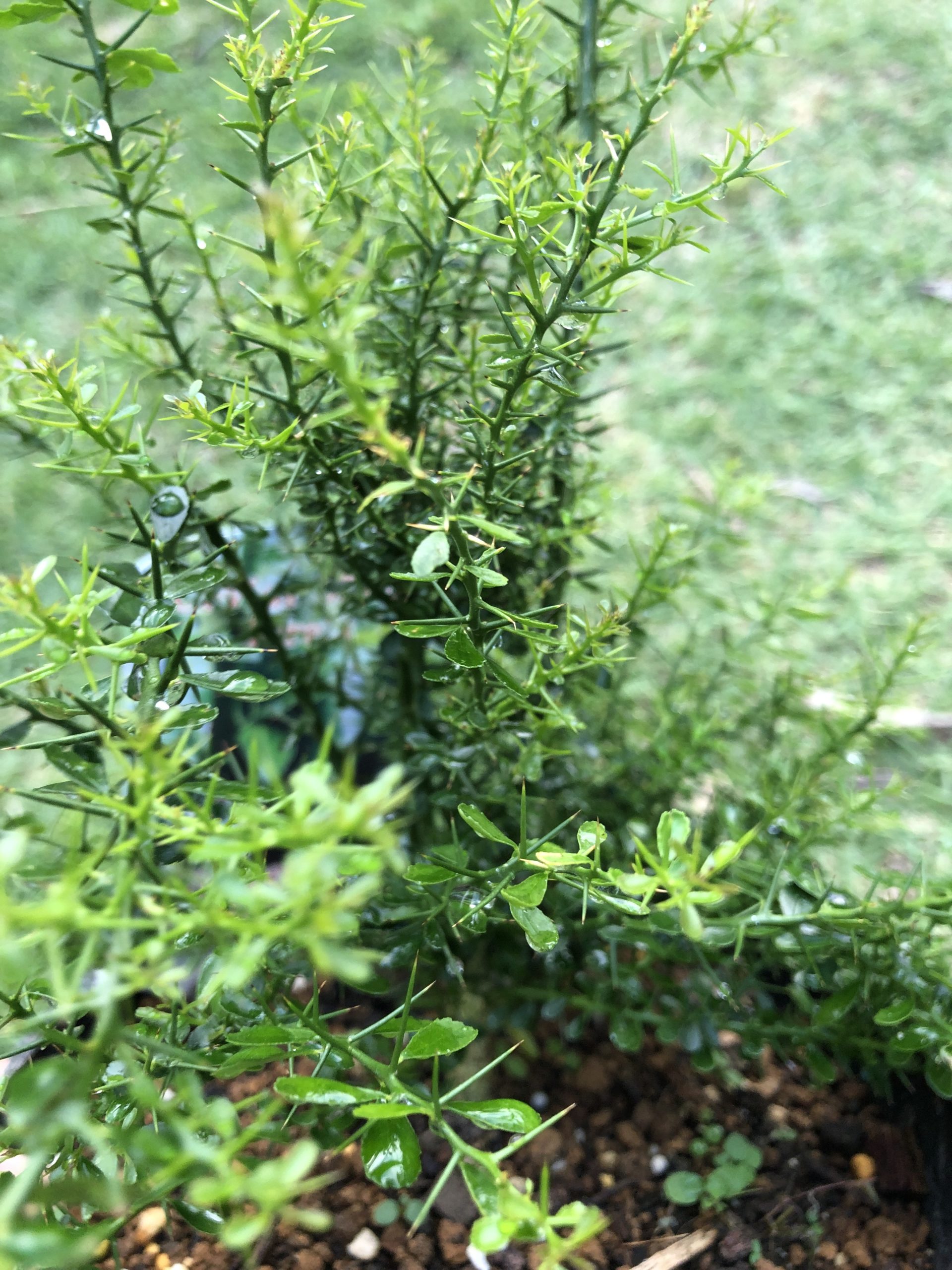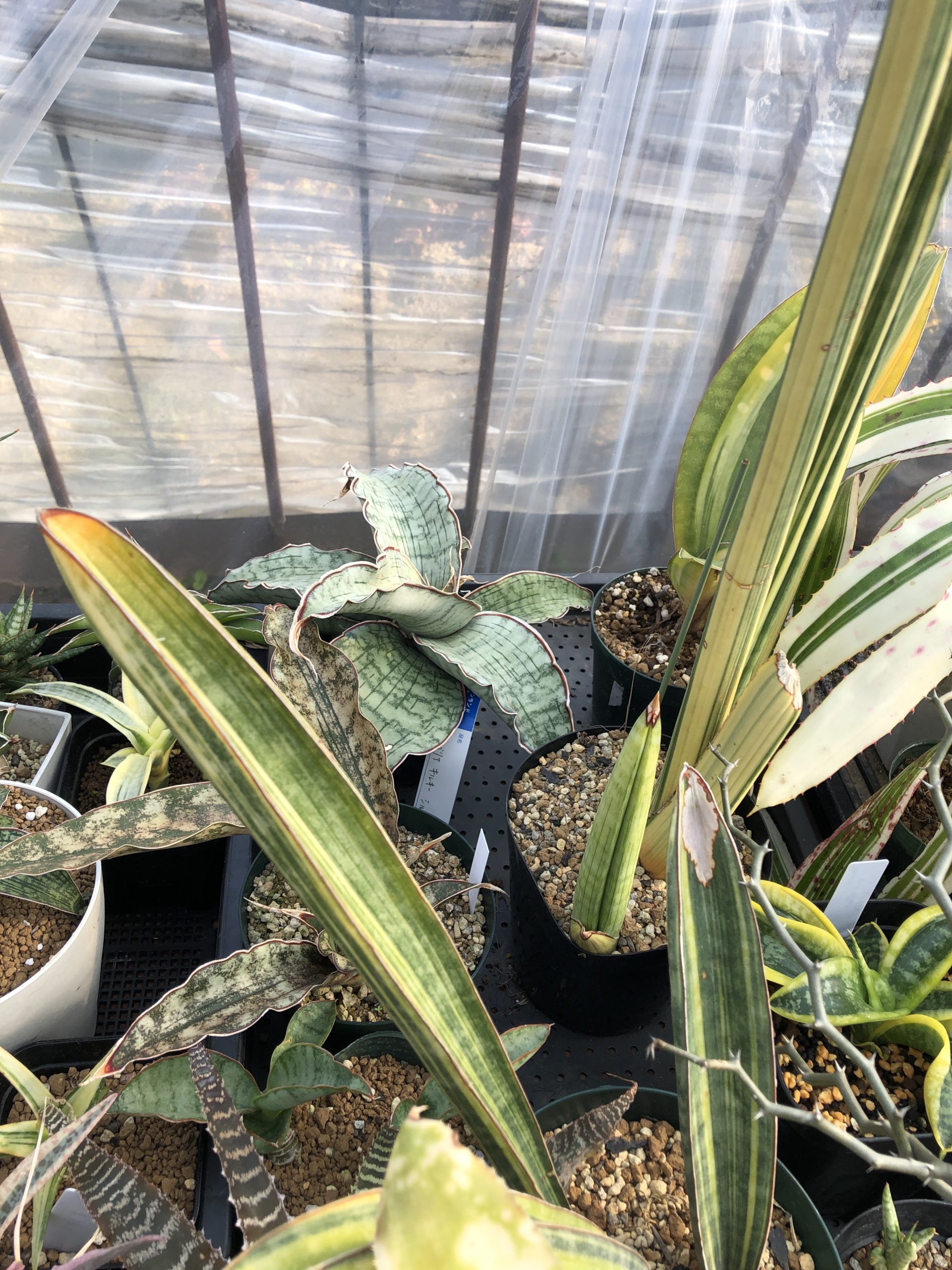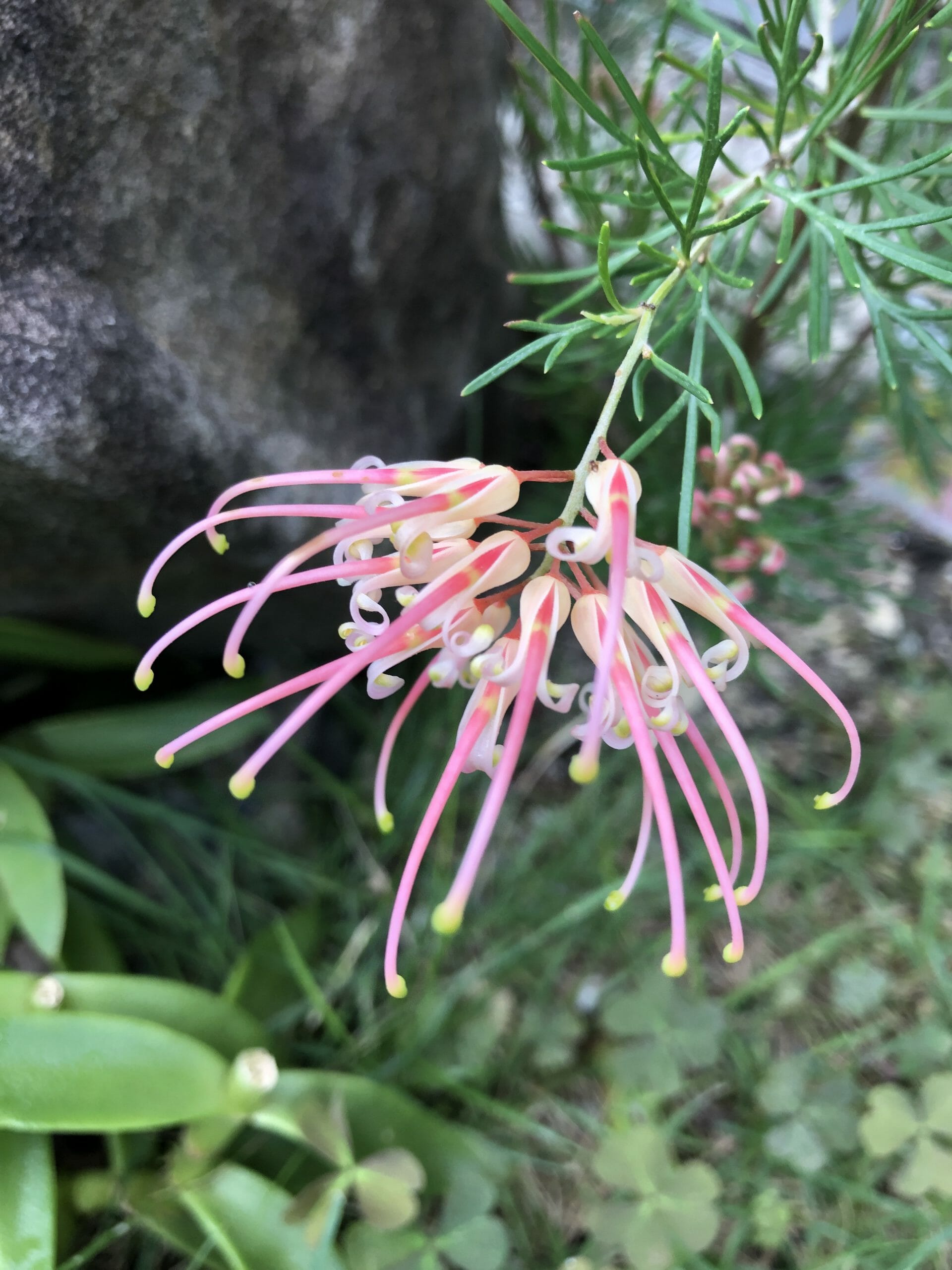春から動きがなかったソテツもここにきてようやく新葉が展開してきました。
また、春に新葉が出た株にも2枚目、3枚目と成長が感じられます。
エンセファラルトス


CITES1で種の保存法にかかるエンセファラルトス。
高価なだけになかなか高嶺の花になっています。
性質は強健であり、よほど腐りかけの株を掴まない限りはのんびり育てて行けると思います。
この株は今年はまだ動きがないですね。
葉っぱの分岐(葉1枚当たりのトゲ数)が少ない株を選びました。
かれこれ4年くらい育てていますが、もう輸入された時の葉は残っていません。
葉を更新するために古い葉を剪定することもあるようですが、私は光合成効率を上げて成長していって欲しいので極端に痛むまで剪定しません。
理屈があっているかはわかりませんが。

こちらは今年お迎えしたホリダス。
譲ってくださったラフレシアリサーチさんにも、ご意見伺い安心してお迎えした期待の株です。
葉の分岐がしっかりしていて、3分頭していたので無理してお迎えしたんですが、後悔はしていないです(汗
一番小さい株から新葉展開し、今は他2株も展開しつつあります。
葉の間隔も狭く、葉色、ウネリ申し分ないと思います。
ホリダスは株によって個性がかなりあるので一品種でも奥が深いと思います。
気に入った葉性は一期一会かもしれませんね。


トゲが少ないプリンセプス。
ホリダスと違って優しく上品な印象もあります。
ようやく成長点がフサフサしてきて展開の兆し。


トランスベノーサスの記載であったが、フェロックスぽいようなよくわからない品種。
葉痛みが強かったので新葉展開を心待ちにしていましたが、ようやく2枚出ました。
それでも古葉はまだまだつけたままで見守ります。


こちらのよくわからない実生ソテツも2枚目の葉が展開しつつあります。
ディオーン


実生のディオーンプルプシー。
昨年播種したのですが、今年2回目の新葉展開。
大株の展開は天使が羽を広げるように綺麗で、いつかその様子を手元で見られるように種から育てはじめましたが、寿命が足りないかもしれません(笑
サイカス


サイカス のミコリッチー。
葉っぱがでかい。
これもがっつり冬に冷え込んで動きがないままでしたが、ようやく展開してきました。
ソテツは本当に動きが少ないだけにわずかな成長が嬉しくなります。

全く動かないまま1-2年。
ようやく動きが。
ほんとに嬉しいです。
クピダはブルーの葉が美しいとされています。
ようやくその一端が現れるかもしれません。

ドワーフのインボイスで入った種子の実生。
はたしてどのような成長を遂げるのか。
今のところ株による差はそれほどないような印象です。

美しいサイカス カイルンシアナ。
葉色と涼しげな葉の姿が良いですね。
昔よりやはり高くなってきている気がします。
まだまだ小さい株ですが、大株の姿はとても魅力的です。
スタンゲリア

オオバシダソテツと呼ばれるスタンゲリア。
根を分けて増やせるそうな。
今のところ動きは一切なく心配な株。
エンセファラルトス同様にサイテス、種の保存法によって保護されている。
増やしやすいのになぜとの呼び声も高く、今後はもしかすると普及することがあるかもしれません。
ソテツ類は水が好き?肥料が好き?
ソテツの仲間は蒸れによる腐りが原因で枯れるリスクが高く、よく水管理について心配される方がいらっしゃいますが、水は好きだと思います。
辛く管理するよりも成長は顕著に感じられることも多いです。
また、肥料についてもマグァンプK、発酵堆肥を与えていますが、肥料焼けすることも無さそうです。
効果的かどうかははっきりしませんが、肥料なく育てていた時は年に1-2枚の展開があれば◎って感じでしたが、肥料、水をしっかりやるようにしてからは成長もしっかり感じられる気がします。
The cycads, which had shown no signs of growth since spring, have finally started to sprout new leaves.
Additionally, some plants that sprouted new leaves in spring are now showing second and third leaves.
Encephalartos
The Encephalartos horridus is especially striking in its leaf color. This species is covered by CITES Appendix I and Japan’s Species Preservation Act, making it a highly prized and expensive plant. However, it’s generally robust and can be grown steadily unless you encounter a particularly unhealthy specimen. This plant hasn’t shown any new growth this year yet. I chose a plant with fewer spines per leaf segment. After about four years of cultivation, the leaves it had when imported have all been replaced. While some people prune old leaves to encourage new growth, I prefer not to prune until they are extremely damaged, hoping it helps increase photosynthesis efficiency and growth, though I’m not sure if that’s the right approach.
This horridus was acquired this year from Rafflesia Research. I was reassured by their advice and eagerly brought it home. With three heads, it’s a distinctive specimen, and I’m glad I made the effort to acquire it. The smallest head has already sprouted new leaves, and the other two are also beginning to grow. The leaf spacing is tight, and the color and waviness of the leaves are excellent. The variety of characteristics in horridus means even a single species can offer a deep and varied experience. Finding a leaf form you love might be a once-in-a-lifetime opportunity.
Encephalartos princeps
The Encephalartos princeps has fewer spines and a gentler, more refined appearance compared to horridus. It’s finally starting to show signs of growth, with the crown becoming fluffy.
Encephalartos transvenosus
Though labeled as transvenosus, this plant seems more like ferox in appearance. After significant leaf damage, it has finally produced two new leaves. I’m still keeping the old leaves to observe its development.
This unidentified cycad seedling is also starting to sprout its second leaf.
Dioon
The Dioon purpusii seedling, which I sowed last year, is now in its second round of new leaf growth. Mature plants have beautifully spread leaves like angel wings, and though I started growing it from seed to witness this myself, it might take longer than my lifespan to see it fully grown.
Cycas
The Cycas micronesica has large leaves and, after being dormant through a cold winter, is finally showing signs of growth. Even small growth is exciting in cycads, which grow slowly.
The Cycas cupida, known for its beautiful blue leaves, has finally started to grow after one or two years of dormancy. It’s delightful to see its development.
The Cycas siamensis dwarf seedling, entered as a dwarf variety, shows little variation between individuals so far.
The Cycas cairnsiana is a beautiful species with cool, elegant leaves. Although still small, it’s steadily becoming more expensive over the years. Mature plants are quite appealing.
Stangeria
Stangeria eriopus, known as the African cabbage palm, can be propagated by dividing its roots. Currently, it’s not showing any growth, which is concerning. Like Encephalartos, Stangeria is protected under CITES and the Species Preservation Act. Despite its easy propagation, there is hope it might become more widespread in the future.
Do Cycads Like Water and Fertilizer?
Cycads are often thought to be at high risk of root rot due to water logging, leading to concerns about watering practices. However, they seem to thrive with ample water. Their growth is often more pronounced when they are well-watered rather than managed with minimal water. Regarding fertilizers, I use Magamp K and fermented compost, and they don’t seem to suffer from fertilizer burn. While I can’t say for sure how effective this is, the plants seemed to grow more robustly with regular watering and fertilizing compared to the slow growth of one or two leaves a year without these inputs.


